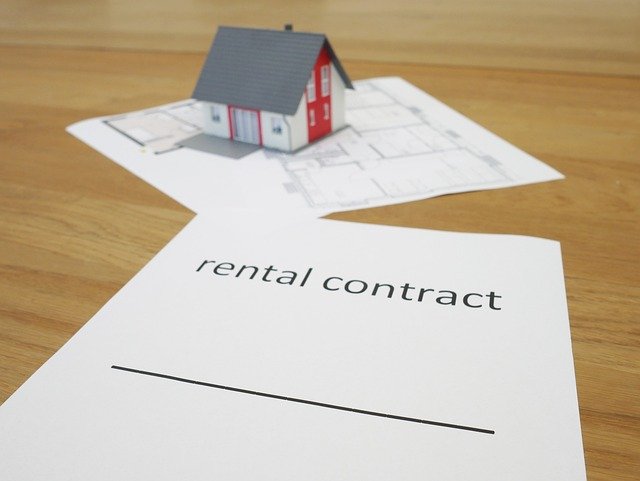Subsidised Housing in South Africa: A Practical Guide for Low-Income Families
Securing safe, affordable housing can be life-changing. This guide explains how low-income families in South Africa can access subsidised housing, what eligibility requirements apply, and what to expect during the application process. Discover success stories and future pathways.

What is subsidised housing and how does it support low-income families?
Subsidised housing refers to government-funded housing programmes designed to assist low-income households in securing affordable accommodation. In South Africa, these initiatives fall under the Department of Human Settlements and aim to address the country’s housing backlog while promoting social equity. The most common form is the Breaking New Ground (BNG) housing subsidy, which provides fully subsidised homes to qualifying beneficiaries. These programmes support families by eliminating or significantly reducing the financial burden of homeownership, offering secure tenure, and providing access to basic services like water, electricity, and sanitation. By stabilising housing situations, subsidised housing enables families to focus on education, employment, and community development rather than worrying about rent or eviction.
Eligibility criteria for government housing programmes in South Africa
To qualify for subsidised housing in South Africa, applicants must meet specific criteria set by the Department of Human Settlements. Firstly, applicants must be South African citizens or hold permanent residency status. They must be over 18 years of age and married or cohabiting with a dependant. A critical requirement is that the household income must not exceed R3,500 per month, although this threshold may vary slightly depending on the specific programme. Applicants must be first-time property owners, meaning they have never received government housing assistance before and do not own property. Additionally, applicants must not have previously benefited from any government housing subsidy. Priority is often given to vulnerable groups, including the elderly, people with disabilities, military veterans, and child-headed households. Meeting these criteria does not guarantee immediate allocation, as demand often exceeds supply, leading to waiting lists.
Steps to apply for subsidised housing through local municipalities
Applying for subsidised housing requires patience and careful attention to documentation. The first step is to visit your local municipality or provincial housing office to obtain an application form. You will need to provide certified copies of several documents, including your South African identity document, proof of income (such as payslips or an affidavit if unemployed), marriage certificate (if applicable), and proof of dependants like birth certificates. Some municipalities may also require proof of residence or a letter from a traditional leader if you live in a rural area. Once you have completed the form and gathered all necessary documents, submit your application to the municipal housing office. After submission, your application will be verified and assessed against the eligibility criteria. If approved, your name will be placed on the housing waiting list, and you will receive a reference number to track your application status. It is important to keep your contact details updated with the municipality, as they will notify you when a housing opportunity becomes available. The waiting period can range from several months to several years, depending on your location and the availability of housing stock.
Real success stories from housing developments across the country
Across South Africa, subsidised housing programmes have transformed the lives of countless families. In the Western Cape, the N2 Gateway project in Cape Town has provided thousands of homes to previously homeless families, creating vibrant communities with access to schools, clinics, and transport. In Gauteng, the Cosmo City development stands as one of the largest integrated housing projects, offering a mix of subsidised, bonded, and rental accommodation to families from diverse income brackets. In KwaZulu-Natal, the Cornubia Integrated Human Settlement project near Durban has delivered thousands of housing units while creating jobs and stimulating local economic development. These success stories demonstrate that when properly implemented, subsidised housing programmes can break cycles of poverty, improve quality of life, and foster social cohesion. Beneficiaries often report improved health outcomes, better educational opportunities for children, and increased economic stability. However, these successes also highlight the importance of integrated planning, community participation, and ongoing maintenance to ensure long-term sustainability.
Challenges in public housing and ways to improve access and equity
Despite the positive impact of subsidised housing programmes, significant challenges persist. Long waiting lists remain a major frustration, with some applicants waiting over a decade for allocation. Corruption and fraud have plagued the system, with reports of unqualified individuals receiving houses through bribery or political connections. The quality of construction has also been questioned, with some developments experiencing structural defects shortly after completion. Geographic inequality means that urban areas often have longer waiting times than rural regions, while some provinces are better resourced than others. Additionally, the location of many housing developments on the urban periphery perpetuates spatial inequality, forcing residents to spend significant time and money on transport to access employment and services. To improve access and equity, several measures are necessary. Strengthening verification processes can reduce fraud, while increasing budget allocations and partnerships with the private sector can accelerate delivery. Community participation in planning and site selection ensures developments meet actual needs. Regular audits of construction quality and contractor accountability can prevent substandard building. Finally, prioritising well-located land for housing developments can reduce spatial inequality and improve residents’ access to economic opportunities. Transparency in allocation processes and regular communication with applicants can also build trust and reduce frustration.
Conclusion
Subsidised housing programmes in South Africa represent a vital tool for addressing inequality and providing dignity to low-income families. While challenges remain in terms of delivery speed, quality, and equitable access, these programmes have successfully housed millions of South Africans and continue to offer hope to those on waiting lists. By understanding eligibility requirements, following proper application procedures, and staying informed about developments in your area, you can navigate the system more effectively. Ongoing advocacy for transparency, quality construction, and fair allocation will help ensure that subsidised housing fulfils its promise of providing safe, affordable homes for all who need them.




